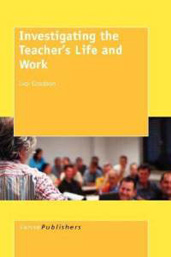Investigating the Teacher's Life and Work
A Guide to Life History Interviews
8) Analysing transcripts
There are a number of strategies for analysing life history interviews. Noblit and Hare (1988) describe a process of translation and synthesis in developing meta-ethnographics that pursue general topics and concepts; Glaser and Strauss (1967) describe the process of emergent thematising, as do Strauss and Corbin (1990); Patton (1980); Denzin and Lincoln (1984) talk of ‘saturation’ as their preferred analytic strategy.
In developing a detailed analysis, I adopt a process of immersion, or what I call ‘bathing in the data’. I read and re-read the transcripts noting emergent and then recurrent themes; organising the quotes into clusters. Then the clustered quotes on particular topics are analysed again and an initial report prepared. From this, a fuller and more final text can be developed.
Bathing in the data often provides surprises and discoveries and should be approached in a manner of open curiosity; predilections and predictions will only limit the potential for themes to emerge. At its best, bathing in the data can be an exciting form of detective work.
The absolutely crucial importance of pauses must be represented in the transcript. What they indicate is that ‘this is a difficult question’; ‘something important is being asked here’; ‘I have got something important to say, but I may not want to say it’. How you indicate pauses in the transcripts is that you should actually time pauses and along the side of the transcript, there should be a timeline indicating the scale of the pause. The question of pauses is related in some senses to the issue of silences. What I mean by silence is the parts of the life and work that are omitted in the descriptions given by the life history teller. For instance, many men talk primarily about their work when giving a life history interview. What is often silent is any discussion of their emotional or familial life. Here the ‘silence’ is saying something very important about the way that the man is storying his life, or at least is choosing to present that story to a wider audience. It is important for the life history interviewer to note and respect the ‘silence’ before possibly asking questions about it. This act of interviewer restraint is quite difficult to hold onto sometimes. Let me give an example.
